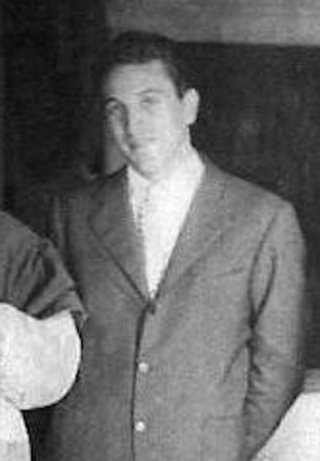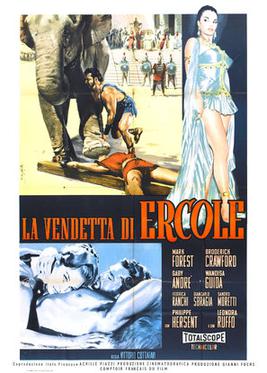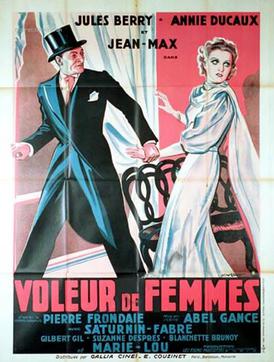Related Research Articles

Laurette Marcia Gemser is an Indonesian-Dutch retired actress, model and costume designer. She is primarily known for her work in Italian erotic cinema, most notably the Emanuelle series. Many of her films were collaborations with directors Joe D'Amato and Bruno Mattei.

Antonio Margheriti, also known under the pseudonyms Anthony M. Dawson and Antony Daisies, was an Italian filmmaker. Margheriti worked in many different genres in the Italian film industry, and was known for his sometimes derivative but often stylish and entertaining science fiction, sword and sandal, horror/giallo, Eurospy, Spaghetti Western, Vietnam War and action movies that were released to a wide international audience. He died in 2002.
Sergio Martino is an Italian film director and producer, notable for his contributions to the giallo genre.
Luigi Batzella also known as Paolo Solvay was an Italian film director, editor, screenwriter and actor. He made numerous low-budget genre films.

Carlo Rambaldi was an Italian special effects artist, winner of three Oscars: one Special Achievement Academy Award for Best Visual Effects in 1977 for the 1976 version of King Kong and two Academy Awards for Best Visual Effects in 1980 and 1983 for, respectively, Alien (1979) and E.T. the Extra-Terrestrial (1982). He is most famous for his work in those two last mentioned films, that is for the mechanical head-effects for the creature in Alien and the design of the title character of E.T. the Extra-Terrestrial.
Valentino Bucchi was an Italian composer.
Bucchi is an Italian surname. Notable people with the surname include:
Alberto De Martino was an Italian film director and screenwriter. Born in Rome, De Martino started as a child actor and later returned to the cinema where worked as a screenwriter, director and dubbing supervisor. De Martino's films as a director specialised in well-crafted knock-offs of Hollywood hit films. These films were specifically created films in Western, horror and mythology genres which were developed for the international market. The Telegraph stated that his best known of these film was probably The Antichrist. The Antichrist capitalized on the box-office appeal of The Exorcist (1973) and in its first week in the United States earned a greater box office than Jaws.

Goliath and the Dragon is a 1960 sword-and-sandal film directed by Vittorio Cottafavi and starring Mark Forest and Broderick Crawford.

Duccio Tessari was an Italian film director, screenwriter and actor, considered one of the fathers of Spaghetti Westerns.
Assunta Spina is a 1930 Italian silent drama film directed by Roberto Roberti and starring Rina De Liguoro and Febo Mari. It is based on the play of the same title by Salvatore Di Giacomo.

Don Cesare di Bazan is a 1942 Italian historical adventure film directed by Riccardo Freda and starring Gino Cervi, Anneliese Uhlig and Paolo Stoppa. The film is set during the Catalan Revolt of the Seventeenth century. It is based on a play by Philippe Dumanoir and Adolphe d'Ennery. It marked the directoral debut of Freda who went on to be a leading commercial Italian filmmaker.

The Courier of Moncenisio is a 1927 Italian silent drama film directed by Baldassarre Negroni and starring Bartolomeo Pagano, Rina De Liguoro and Umberto Casilini. It is an adaptation of the 1852 play Jean le cocher by Joseph Bouchardy.
Agostino Borgato, sometimes known as Al Borgato, was an Italian actor and director, before moving to Hollywood in the mid-1920s. Borgato acted and/or directed about fifteen films in his native Italy between 1915 and 1922. In the 1920s, he also acted on the stage in both Italy and England. In 1925 Borgato immigrated to the United States, where he began his American acting career in Herbert Brenon's silent film, The Street of Forgotten Men.

Beatrice Cenci is a 1926 Italian silent historical film directed by Baldassarre Negroni and starring Maria Jacobini, Raimondo Van Riel and Franz Sala. It is one of several films portraying the story of the sixteenth century Italian noblewoman Beatrice Cenci.

Villafranca is a 1934 Italian historical drama film directed by Giovacchino Forzano and starring Corrado Racca, Annibale Betrone and Enzo Biliotti. It was based on a play by Benito Mussolini, then Italian dictator, about the 1859 agreement between Napoleon III and Count Cavour which led to the Second Italian War of Independence.

The Woman Thief is a 1938 French-Italian drama film directed by Abel Gance and starring Jules Berry, Annie Ducaux and Suzanne Desprès.

The Woman of Monte Carlo is a 1938 Italian "white-telephones" drama film directed by André Berthomieu and Mario Soldati and starring Dita Parlo, Fosco Giachetti and Jules Berry. A separate French version Unknown of Monte Carlo was released the following year.
Nostradamus is a 1925 Italian silent historical film directed by Mario Roncoroni and starring Cello Bucchi in the title role of Nostradamus. It was one of the final film's released by the Unione Cinematografica Italiana which went bankrupt around this time.
References
- ↑ Kinnard & Crnkovic p.49